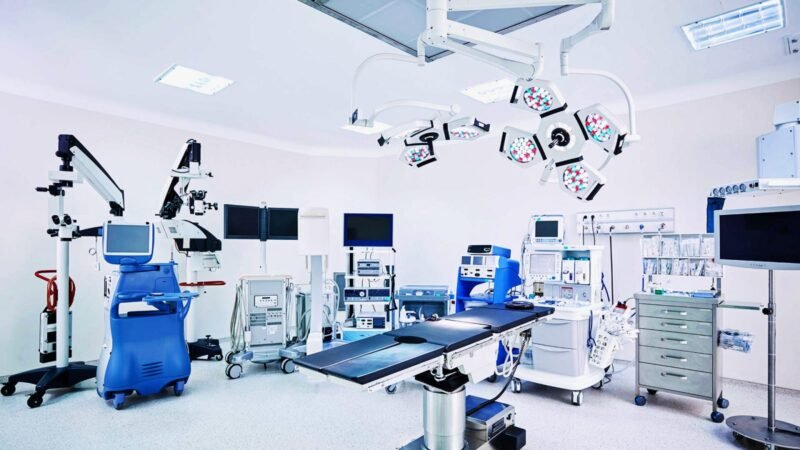Medical devices play a crucial role in saving lives and improving healthcare. Whether it’s a simple bandage or a complex surgical tool, these devices need to be reliable, safe, and effective. One of the most important components of many medical devices is the seal. Seals prevent contamination, protect delicate electronics, and ensure that medical tools perform as they should. Over the years, there have been many innovations in Medical Devices Seals, improving their performance and making them safer for patients.
1. Importance of Seals in Medical Devices
Before we dive into the innovations, it’s important to understand why seals are so important in medical devices. Seals are used in various medical devices such as syringes, pumps, ventilators, and even in surgical instruments. They serve a few key purposes:
- Preventing Contamination
Seals keep harmful bacteria, viruses, and other contaminants out of medical devices, ensuring that the tools are safe to use on patients.
- Ensuring Device Performance
Seals help maintain the integrity of medical devices, ensuring that they work properly without leaks or malfunctions.
- Protecting Sensitive Components
Many medical devices contain delicate electronics or sensors that need to be protected from moisture, dust, and other environmental factors.
Without proper seals, medical devices would be at risk of contamination, malfunction, or failure, which could have serious consequences for patient safety.
2. Innovations in Material Science for Seals
One of the biggest innovations in seals for medical devices comes from advancements in material science. Researchers and engineers have developed new materials that are more durable, flexible, and resistant to chemicals and temperature changes. Some of the latest materials used in medical device seals include:
- Silicone Seals
Silicone is widely used in medical devices due to its flexibility, biocompatibility, and resistance to high temperatures. It’s also hypoallergenic, making it a safe choice for patients with allergies or sensitive skin. Newer silicone seals are designed to withstand extreme sterilization processes without losing their shape or integrity. This makes them ideal for use in devices that need to be sterilized frequently, such as syringes and surgical tools.
- Thermoplastic Elastomers (TPE)
TPEs are another innovative material used in medical device seals. They combine the flexibility of rubber with the durability of plastic, making them ideal for applications where both strength and flexibility are required. TPE seals are resistant to chemicals and can be used in devices that come into contact with harsh cleaning agents or bodily fluids. Additionally, TPEs are recyclable, making them an eco-friendly option for medical device manufacturers.
3. Miniaturization of Seals for Compact Medical Devices
As medical devices become smaller and more portable, the seals used in these devices must also shrink in size. One of the latest trends in medical device development is the miniaturization of seals. This is particularly important for devices such as insulin pumps, hearing aids, and implantable devices that need to be small and lightweight.
- Micro-Seals
Micro-seals are tiny seals designed for use in small medical devices. Despite their small size, these seals are incredibly durable and can withstand the pressure and wear-and-tear of daily use. They are used in a variety of devices, including pacemakers, insulin pumps, and hearing aids. Innovations in manufacturing processes, such as precision molding and laser cutting, have made it possible to create seals that are both small and reliable.
- Nanotechnology in Seals
Nanotechnology is also making its way into medical seals. Researchers are developing nanostructured materials that can be used to create ultra-thin, flexible Medical Devices Seals. These materials can provide better protection against contaminants while taking up less space, making them ideal for use in small or implantable medical devices.
4. Sterilization-Resistant Seals
Sterilization is a critical process in the medical field. Medical devices must be sterilized to prevent the spread of infection and ensure patient safety. However, repeated sterilization can take a toll on the seals used in these devices, causing them to degrade over time. This can lead to leaks, malfunctions, and contamination.
To address this issue, manufacturers have developed sterilization-resistant seals that can withstand the harsh conditions of sterilization processes, such as exposure to high heat, radiation, and strong chemicals. These seals are made from materials that are resistant to wear and tear, ensuring that they remain effective even after multiple rounds of sterilization.
- Autoclave-Resistant Seals
Autoclaving is a common method of sterilizing medical devices by exposing them to high-pressure steam. Traditional seals can become brittle or deformed after being autoclaved multiple times. However, newer autoclave-resistant seals are made from materials like silicone and fluoropolymers, which can withstand the high temperatures and pressure of autoclaving without losing their effectiveness.
5. Advanced Sealing Technologies
In addition to new materials, there have been several advancements in sealing technologies that improve the performance of medical device seals. Some of these technologies include:
- Self-Healing Seals
Self-healing seals are a new innovation that can repair themselves if they become damaged. These seals are made from special materials that can automatically fill in small cracks or punctures, preventing leaks and extending the life of the seal. This technology is particularly useful in devices that are subjected to heavy use or harsh conditions, such as infusion pumps or ventilators.
Conclusion
Innovations in Medical Devices Seals are helping to improve patient safety, enhance device performance, and support the development of new and more advanced medical tools. From new materials like silicone and thermoplastic elastomers to advanced sealing technologies like self-healing and dynamic seals, these innovations are playing a critical role in the healthcare industry. As medical devices continue to evolve, we can expect even more advancements in seal technology that will further improve the quality and reliability of medical care. Thank visiting onlinespost.com
